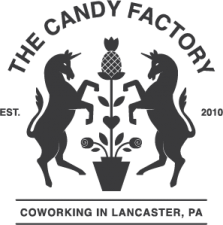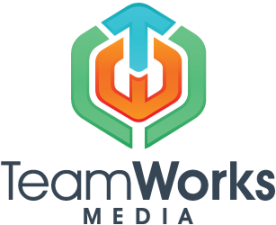JUST ANNOUNCED: NDI 5
With brand new features to promote remote workflows, NDI has announced major advancements with NDI Remote, Bridge, Adobe Support and a lot more!
You can find more info on the NDI additions below.
-
NDI Remote: Connect with any remote user to receive their video and audio over the public internet by simply sharing a link. This is ideal both to quickly add sources to live productions, or to receive video from any mobile device anywhere in the world into virtually any video software application.
-
NDI Audio Direct: This set of audio plugins allows virtually any audio software application to take advantage of NDI. NDI Audio Direct lets users select, receive, and generate multichannel audio with extremely high quality and near zero latency.
-
NDI Bridge: Users can securely share NDI sources between remote sites, anywhere in the world, using a simple and secure network setup. This allows live production teams to stay native in NDI, end-to-end, reducing complexity, cost and latency across any distance.
-
Reliable UDP: This new transmission protocol NDI makes network infrastructure easier to setup, solving network congestion even with low performance network equipment and without the need of complex configuration.
-
OSX Support: Deeper support for Apple silicon systems, brings full NDI capability to all iOS, tvOS and iPadOS devices for the first time
-
Improved Adobe Premiere and FCP support: NLE editors rejoice, this updated plug-in allows output for Final Cut Pro with real-time audio and video frame buffer output, while the Adobe Premiere and After Effects plugin now features improved audio workflow
Media, COVID and Coworking – Oh my!

by Anne Kirby
Founder, Candy Factory
Anne Kirby founded The Candy Factory in 2010. It is a 20,000 square foot coworking space and social club in Lancaster, PA. It houses our new media offerings and a media club for amateurs and professionals alike.
It has grown organically over the past 11 years and while things had to slow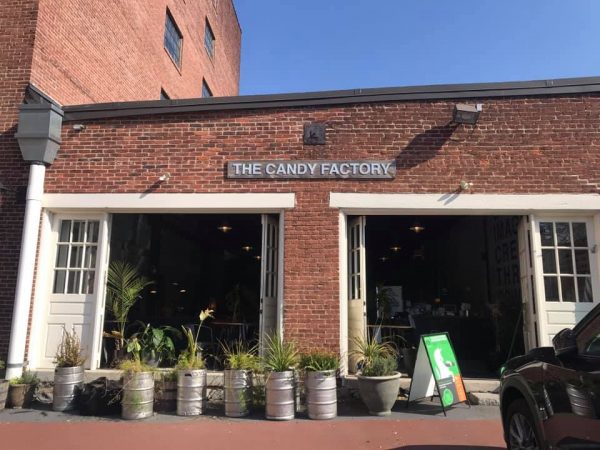 down in 2020, 2021 is proving to be a year full of creative endeavors and new media projects. With a background in Design and Marketing, Anne and her partner Jason Mundok have been working on a new media outlet called So Good Lancaster and are using the media studio to create all their content.
down in 2020, 2021 is proving to be a year full of creative endeavors and new media projects. With a background in Design and Marketing, Anne and her partner Jason Mundok have been working on a new media outlet called So Good Lancaster and are using the media studio to create all their content.
The pause of 2020 allowed us to assess our offerings at our coworking space and envision what reopening would look like for us, our community, and Lancaster. Pre-pandemic, we had opened a small media studio and worked on some in-house shows via a media collective we started with members. The pandemic has highlighted how important great video content and access to production resources are as people navigate going completely virtual and using video for awareness, engagement, and education.
 Forward almost a year, and we’ve been working to develop a more robust facility. It’s been helpful to have one of our members, Stephen Stone of AsaPro, as a resource. He’s installed equipment and has been willing to consult with us on the best tools to meet our needs. This kind of collaboration and sharing of skills is what coworking at The Candy Factory is all about. Members love the new facility, and we’re impressed each day by the level of content being created from video to audio.
Forward almost a year, and we’ve been working to develop a more robust facility. It’s been helpful to have one of our members, Stephen Stone of AsaPro, as a resource. He’s installed equipment and has been willing to consult with us on the best tools to meet our needs. This kind of collaboration and sharing of skills is what coworking at The Candy Factory is all about. Members love the new facility, and we’re impressed each day by the level of content being created from video to audio.
If you’re a coworking space looking to enhance your member experience,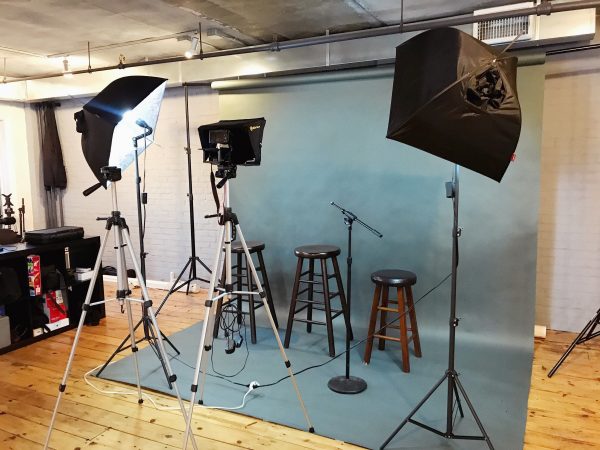 adding a media studio to your space is an intelligent move. If you’re in need of help with that process, reaching out to AsaPro is a great first step.
adding a media studio to your space is an intelligent move. If you’re in need of help with that process, reaching out to AsaPro is a great first step.
Anne Kirby is the Founder of The Candy Factory and is a contributor at AsaPro. Click here to see all of Anne’s articles.
Anne Kirby is the Founder of The Candy Factory and is a contributor at AsaPro. Click here to see all of Anne’s articles.
Adobe Premiere Tip of the Month: MOGRT Advanced Replacement

Dir. Digital Content Production, Boston Celtics
Wouldn’t it be nice to change out images or videos within a motion graphics template? Well, now you can!
In Adobe’s newest release, the game has been changed with motion graphics templates that can be used within Premiere. The update now allows you to change out media directly within Premiere without needing to open After Effects. It will be a major time saver, and allow for really quick and efficient changes to post content to social media, or allow editors to take premade motion graphics, and make adjustments. You can make image replacements with photos or video. I put together this short tutorial to show you how it works. Happy to chat more if interested.
Justin Peterson is the Director of Digital Content Production at the Boston Celtics and is a contributor at AsaPro. Click here to see all of Justin’s articles.
Fotosync

by Mike Buhrow,
Senior Editor, TeamWorks Media
Another month has passed in this unbelievably isolated time of the pandemic. It isn’t like we have not had connections with our co-workers in any manner, in fact many may believe we have focused much more time than normal getting organized and ready for our return. A hyper focus to be exact, on getting things organized and in a place where we will benefit in the future with extreme efficiency. This led to a great development with AsaPro named Fotosync that I will now describe.
One major focus that we have had at TeamWorks this past year, is to transfer all of the metadata within our enormous photo library to our EditShare system. When I say enormous, there are probably different definitions that each company has for such an amount. Ours was in the range of 20,000 photos…and counting. The photographer we use has created a library with incredibly detailed logging notes for every photo. We can always find what we need in Adobe Bridge, but then we have to copy and upload the photo into another folder and location to share with our production team.
We all know what this can lead to as this goes on every day. A system of hide-and-seek for which photos are being used, has been used and should be used. The issue we have had is that using Adobe Bridge to search for the keywords and photos, all the photos would have to be on one local media space and only one computer could do the search and finding of the photos we were looking to use for the current project. What we really wanted to be able to do is search the photos within our EditShare system and keep them in a nice and tidy folder structure. We would then allow all of our production people to log into our EditShare AirFLOW server in order to do a search for which photos they want to use for a specific project. Then they would be able to download what they needed from the AirFLOW server to their local drives for quicker working conditions. Our goal was to keep our original raw elements in the folder structure we developed from the start. And most importantly, our employees could search all of our photos from anywhere in the world with WIFI and a browser and keep our level of productivity at a high level.

This is where having a great relationship with a company like Asapro comes in handy. In just a few short conversations, they had brainstormed this new approach to taking the detailed metadata that our photographer added to each photo and transferring it into an easily searchable database on our EditShare system. When we first discussed this idea, I thought it would still take months to do the actual conversion. Let’s just say, my estimation was further off than can even be imagined.
Within months of the first conversation we had with AsaPro, we had a new server added to our EditShare FLOW server. A few extra tests and we were off and running. We gathered as a team and talked about how we could take a few hours a day to get this done within a month or so and then we began the actual work. Within one day of clicking the additional Fotosync button on our newly designed template and server, we had all 20,000 photos completed and searchable on our EditShare AirFLOW server. That is correct, I just wrote one day. In the past world of copy and pasting of metadata onto our server, I can only estimate that we were in the realm of possibility of having someone work on this over the course of a year and still not getting through all the photos.
I am not sure of the return on investment we have just encountered, but what I do know is that within one day we have successfully given access to all of our employees an incredible photo library. This will not only make searching easier and more refined, but it has most definitely added potential to our creative capabilities that we never could have imagined one year ago. I sincerely hope that other companies with similar needs get a chance to work with AsaPro’s Fotosync. This development has given us freedom from the mundane and allowed us to use our energy to create.
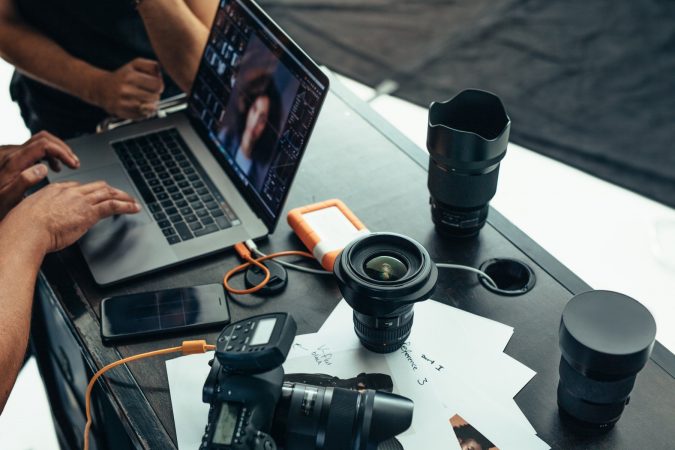
Mike Buhrow is the Senior Editor at TeamWorks Media and is an AsaPro Contributor. Click here to see all of Mike’s articles.
Project Feature: Lego Police Station

Dir. Digital Content Production, Boston Celtics
It’s interesting how skill development works. Getting into 3D modeling and rendering, I didn’t realize how much knowledge I would pull from my video production background.
Lighting applies. Camera knowledge applies. Composition applies. Timing and pacing applies. Those weren’t all skills that I built over night. They are, however, foundational to the motion design and 3D world of creating moving pictures.
Watch here: https://vimeo.com/528965049

The challenge is that if you come up against a project and need a skill, it’s often too late. Building foundational skills over time and singularly has become even more of a focus for me in this attention economy. It’s easy to get distracted by the shiny ball, or the cool hip thing that someone created a tutorial about. It may work in the moment, but the short-term benefits don’t outweigh the long-term gains.
I’ve enjoyed the process. My appreciation for a constantly evolving world with a foundational skillset that I can take and apply to different avenues of work continues to grow. You never know when the knowledge will serve you, so it’s best to enjoy the journey!
Justin Peterson is the Director of Digital Content Production at the Boston Celtics and is a contributor at AsaPro. Click here to see all of Justin’s articles.
A Letter from the CEO – February 2021
Two months into 2021, the outlook for our market is very promising. More Americans are being vaccinated daily, a great next step towards a return to normalcy. According to projections made by PWC, the Media & Entertainment (M&E) market is poised to return to pre-COVID-19 expectations this year and will continue to grow over the next 3 years.
The M&E market is in the midst of rapid changes brought on by the need for collaborative remote workflow. A need spurn from content creators working from home, and companies hiring skilled talents across the globe to produce content. Vendors, like EditShare, LucidLink Cloud Technology, Data Expedition Inc. are making these workflows a reality. Our own development team is also busy developing solutions to help our customers’ creative teams focus on what is important to them – create content to tell a story.
How often, as an editor or producer, do you receive transcripts and photos with valuable metadata that you wish you did not have to manually import in your asset management software? Our latest plugins, FotoSync and TranSync now automate these processes. For more information or a demo, please email us at info@AsaPro-line.com.
We are also thrilled to announce that as of January 21st, 2021, we officially opened a new sales office in Lancaster, Pennsylvania. The office, located at 342 N Queen Street Rear, Lancaster, Pennsylvania 17603, will be managed by Stephen Stone. This new location will allow AsaPro to better serve our East Coast customers. Stephen is a Sales Engineer at AsaPro handling pre-sales, demos, and installations. Specializing in NewTek, Editshare, and other broadcast and AV equipment, Stephen can offer a solution that is right for you. As a former editor, Stephen thinks like the customers that he serves and puts himself in their shoes when devising the best plan for them. Reach out to our new sales and support office in Lancaster, PA by opening a support ticket here.
Thank you,
Carl Lemaine
President, CEO of AsaPro
Tip of the Month: Try Something New

Dir. Digital Content Production, Boston Celtics
When was the last time you started something new?
My most recent adventure has been in learning how to model in Cinema4D. I was terrified of it, and had no idea what I was doing. Turns out, after spending 2 ½ months working on it, I started to get better at it, and begin enjoying it more.
My kids have been a big source of inspiration for me. When they learned to
walk, they didn’t start by walking. In fact, it was a lot of falling down and getting back up. I reflect on that time whenever I’m beginning to learn something new. I know I’m going to fall down, and some of the falls might be more difficult than others. But, I have to keep getting back up and trying to move forward. That’s the only way I know how to do it. It seems like kids are meant to remind us of lessons we learned and forgot a long time ago. They’re great teachers!
Is there something you’ve wanted to learn but felt it was out of reach? I bet if you gave it a shot, and stuck it out for a few weeks (maybe a few months) that you might just begin to take that skill for a walk and start to believe you can do it!
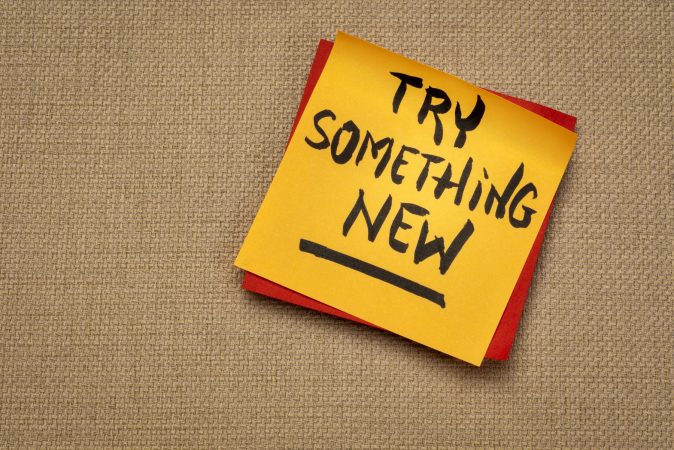
Justin Peterson is the Director of Digital Content Production at the Boston Celtics and is a contributor at AsaPro. Click here to see all of Justin’s articles.
Old Habits Are Easy To Break

by Mike Buhrow,
Senior Editor, TeamWorks Media
One of the first editors I assisted could be found in the same place at the same time every day of work. His routine was exactly the same. From his breakfast, to his lunch and sometimes to his dinner, I would witness him eating the same thing almost every day.
There is indeed something to be said about the value of routines. You become efficient because you aren’t wasting your brain power on meaningless decisions when you have already found what works best for you. However, the biggest disadvantage is that you may miss the opportunity to try new and exciting things that cross your path.
One of the most exciting things in the world of editing that I was lucky enough to learn about in the early days of non-linear editing was plug-ins. Effects, transitions, text treatments, sound filters and many more items were added directly to the computer and within the application I was working on. All in one place. I didn’t have to learn a whole new machine to make a logo move. I didn’t have to go back into the color correction room to change the brightness of a shot. I didn’t have to reserve a studio to take out a little background noise. And before I give any more examples, I need to make it clear, that I prefer using the talents and equipment of graphics, color and audio professionals over my own abilities at these things, however, there are budget and time constraints to consider on every project and it is nice to have the option to just get things done sometimes.

I think it is in our best interest as post-production specialists, to always try to learn new programs, new plug-ins, new panels and even new styles and tricks. It is important to always keep an open mind when new things are presented. I remember being in a room with six editors when one of Chicago’s biggest equipment dealers had us in to present the newest non-linear editing system. We sat and watched an editor from L.A. show us how they were editing a television program with this new non-linear system. Most of the room looked at the computer screen and said, this is never going to replace all of our equipment in the edit suites we have because the quality was poor. I shared lunch with another editor who had also only been editing for about a year and we were so excited that this was going to be our future. It took a few years before it overtook the industry, but here we are all on our computers, editing high-definition footage on our computers and laptops while sharing footage from around the world.
At TeamWorks, we just installed the new Premiere Pro panels for EditShare. This opened a new door to our footage and A-Roll sequences that we have never had available with such ease. There were ways to track it down and load it into our editing software, but now we can stay within our current project and drag and drop clips and sequences directly into our working project. I realize these types of advancements come quick and often now days and that is exciting. The more that companies offer to editors to save time and keep their media organized is what moves them to the top of the list. Companies that offer panels for stock footage, music and templates will all get more business if they offer ease of access to their product. If you are using a certain service for these visual and audio enhancements to our editing, please reach out to those companies. Check their websites or call them to find out if they have a panel to add to your software. They will help you change your routine and try some new and exciting way to enhance your creative abilities.

Mike Buhrow is the Senior Editor at TeamWorks Media and is an AsaPro Contributor. Click here to see all of Mike’s articles.
People Power vs. Automation

by Mike Buhrow,
Senior Editor, TeamWorks Media
When I began editing back in 1990, I never thought a computer would be such a great assistant. To me, the inevitable change that occurs in the business of media creation is always the most exciting and one of the easiest aspects of the overall industry to accept.
By change, I mean advancements in technology and its role in assisting the overall process. By allowing us to automate menial tasks automation opens up large amounts of time to utilize our creative abilities.
I have seen rooms filled with film, one-inch tapes, three-quarter-inch tapes, betaSP tapes, DigiBeta tapes, DVCam tapes, DAT tapes, and so on. By now, some people reading this are thinking of all the other formats of tapes and file formats we have had to keep track of, log, organize, store and sometimes just remember what was on them. Now we can set up procedures with automation to make all the different forms of media that anyone would want to see.

We had a client where we had to create multiple high-resolution media files for 14 unique presentations on stadium video boards, webM files for playback in a museum, H.264 files for the client to use as they wish, as well as MP4 files for social media that people will watch on their phones, computers and tablets. Now we can set up exports of all these formats easily using our EditShare automation. Then we can maintain properly named folders that are searchable by anyone, anytime, and anywhere as long as they have a computer and access to the internet.
Some may look at automation as a way to take away jobs from people who are employed to perform some of these tasks. Others may look at automation as a way to create more jobs and allow more time for people to create media.
In my opinion, we should embrace these advancements when they present themselves because they will continue to make the end result of our work better. And if you don’t know if you have automation capabilities in your infrastructure or if you don’t think it is something you can learn by yourself, ask your equipment supplier to help you get going. The return on investment will be incredible and you will see great change in the end result.

Mike Buhrow is the Senior Editor at TeamWorks Media and is an AsaPro Contributor. Click here to see all of Mike’s articles.



